So, you have a flat tire or one that’s leaking air. It’s not the end of the world. Luckily there are safe and cost-effective ways to properly repair most tire punctures. The purpose of this article is to show you the difference between a safe, permanent repair and a temporary string, plug or patch repair.
According to the National Highway Traffic Safety Administration (NHSTA) and the Tire Industry Association (TIA), the only method to properly repair a tire puncture is to fill the injury with a repair stem and back the stem with a repair patch. This is commonly known as a combination repair or a patch/plug repair.
Patch/plug repairs are most often performed using a one-piece repair unit that combines the repair stem and cap (or patch) into one unit. However, special circumstances may require the use of a two-piece combination repair (ex. If the angle of the puncture exceeds 35 degrees). The repair is then permanently bonded to the inside of tire and through the injury channel using a cold, chemical vulcanizing process.
The repair essentially becomes part of the tire, creating an air-tight seal that keeps air in and moisture and contaminants out (more on this procedure below).
Emergency roadside plug repairs are NOT intended to be a permanent tire repair. Plugs and string repairs are designed to get you back up and rolling long enough to get home or to the nearest service center to perform a proper tire repair.
The common misconception with plug and string repairs is that because they hold air, they are safe to use. While it is true that many plug repairs do a great job of keeping air in the tire, that’s only part of the equation. Because they’re not completely sealing the injury, plug repairs may allow air and moisture to penetrate the body of the tire. Over time, this could lead to a dangerous (or even deadly) blowout.
A Patch-Only Tire Repair Leaves Your Tire Susceptible to DamageA tire repair that uses only a patch is also NOT considered proper or safe. A properly installed patch will do a great job of allowing the tire to hold air. However, similarly to the plug-only repair, the patch does not fill the injury channel. Therefore, air and moisture could seep into the tire from the tread surface and eventually damage the tire.
A properly installed patch will do a great job of allowing the tire to hold air. However, similarly to the plug-only repair, the patch does not fill the injury channel. Therefore, air and moisture could seep into the tire from the tread surface and eventually damage the tire.
Only a proper patch/plug repair completely seals the puncture from inside the tire and through the entire injury channel. There are a few extra steps necessary to perform a proper tire repair in accordance with industry guidelines. We’ve developed a simple acronym to help organize and remember the steps: R.E.P.A.I.R.
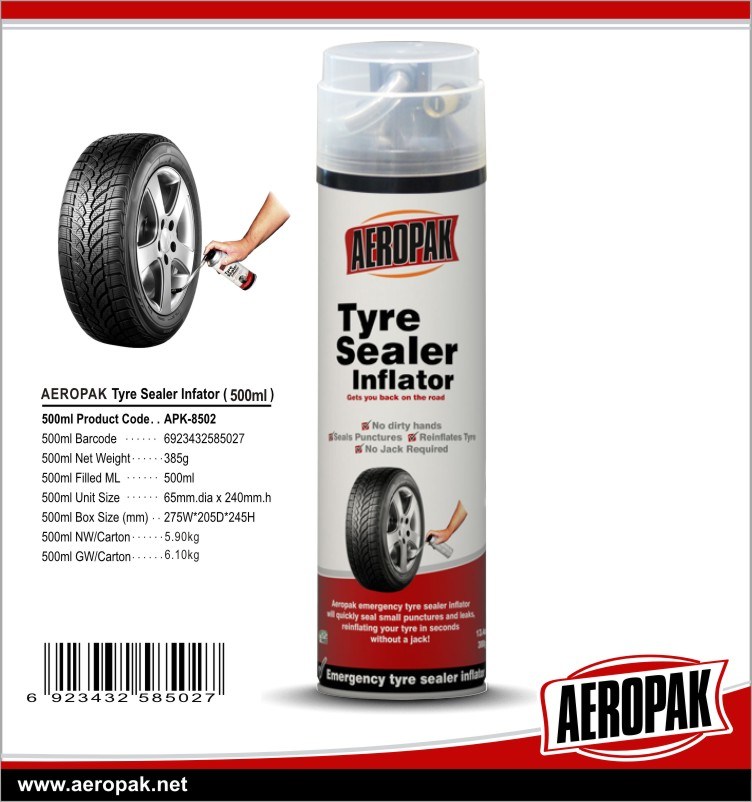 It can also be determined if the puncture did any significant damage to the cords or belts.
It can also be determined if the puncture did any significant damage to the cords or belts. The over-buffed area of the inner liner is treated with a thin layer of rubber sealant, and the excess repair is trimmed to approximately ¼” above the tread surface.
The over-buffed area of the inner liner is treated with a thin layer of rubber sealant, and the excess repair is trimmed to approximately ¼” above the tread surface.There are a number of factors that may determine whether or not your tire is safe to repair. These factors fall into three main categories:
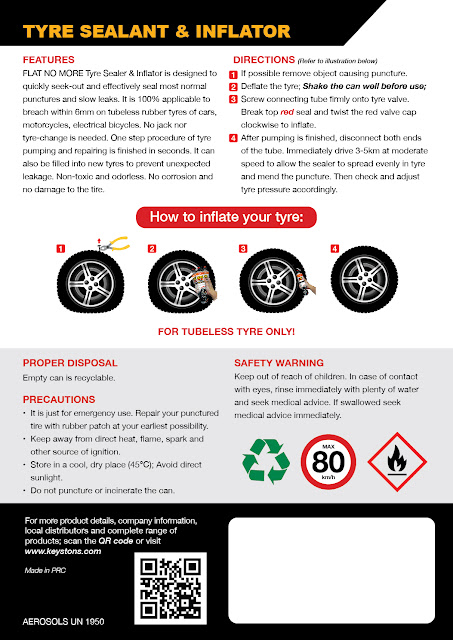 Excessive wear, casing separation, impact damage and other conditions may make it unsafe to properly repair your tire. For a more comprehensive list of repairable vs. non-repairable conditions visit our blog Can Your Tire Be Repaired?
Excessive wear, casing separation, impact damage and other conditions may make it unsafe to properly repair your tire. For a more comprehensive list of repairable vs. non-repairable conditions visit our blog Can Your Tire Be Repaired?The occasional flat or leaky tire is an unavoidable part of life. But, taking shortcuts to repair it can be dangerous to you and your passengers. Take the time and do the research to do the job right and/or find a reputable tire repair shop trained in proper tire repair procedure.
Knowing how to properly repair a punctured tire can save you money, as well as keep you from being
stranded
on the side of the road.
Luckily, a couple of easy-to-follow methods exist for repairing a punctured tire.
While you should ultimately have your tires inspected and replaced if necessary following a tire repair, the methods below provide a great temporary fix to a punctured tire until you can get to a tire store.
Here's how to plug and patch a tire.
RECOMMENDED
No spam or unwanted phone calls · No long forms · No fees, ever
ZIP Code
ZIP Code
Find insurance savings (100% Free)
Using a tire plug to repair a punctured tire
A tire plug kit helps patch a tire quickly and easily. Considered a safer alternative to patches and sealant, a tire plug actually inserts into the tire. It then expands to plug any holes.
Here are the steps for how to plug a tire.
Step 1: Remove tire. Start by removing the punctured tire.
Step 2: Pull out object. Pull out the object that punctured the tire.
Step 3: Clean hole. Clean the puncture hole using a rasp tool, which you can find at brick-and-mortar stores like The Home Depot and Advanced Auto Parts.
A tire plug kit should contain various tools, one of which is a rasp tool.
The rasp tool can help the plug hold by roughening the tire material in the hole where you want to place the plug.
Step 4: Apply adhesive. Apply the adhesive that came with the tire plug kit.
Common adhesives include rubber cement or some other type of glue.
This glue can initially help lubricate the puncture hole, making it easier to get the plug through.
Step 5: Insert plug. Using the insertion tool, which also comes with your kit, insert the plug into the puncture hole.
While difficult to insert in some cases, you can get the plug to fit by squeezing down one of the end of the plug material.
Once the adhesive has dried, cut away any excess material from the plug using a razor or knife.
Step 6: Place air in the tire. Fill the tire to the recommended air pressure, which you can find inside the wall of the tire or in the owner's manual.
Test the seal of the tire plug by squirting a soap/water mix on the puncture area.
If needed, apply more adhesive or try using another plug.
Using tire sealant to repair a punctured tire
Flat tire sealant, such as
Fix-a-Flat
, provides a fast and easy way to fix a punctured tire—as long as the puncture is not too large. You should have the tire professionally repaired or replaced if the puncture is larger than one-quarter inch.
The following steps walk you through the process of using sealant to patch your tire.
Step 1: Remove the object. First, remove the object that punctured your tire.
Step 2: Position the tire. Position the tire so that the valve stem rests at the top of the wheel.
Remove the valve stem cap.
Step 3: Attach tire sealant nozzle. Attach the nozzle from the tire sealant can to the valve stem.
Press the button releasing the sealant into the tire.
Step 4: Drive the car. Drive the car around until the sealant has spread evenly throughout the tire.
This step is necessary to keep the sealant from forming a lump in one area and unbalancing the tire.
Step 5: Replace the tire. Make sure to replace the tire within a certain time limit.
Sealants are only meant to get you to where you can get the tire replaced. Most sealants only last for 100 miles or three days.
To minimize the chances of a punctured tire, try to avoid driving over potholes and other rough areas in the street, as well as on the side of the road where debris collects.
Even given your best efforts, a punctured tire is bound to happen. And when it does, you can use one of the above methods to fix it on the spot. Just remember to take your car to a professional tire shop to have the punctured tire inspected for safety, and replaced if necessary. And don't forget to keep an eye out for
slow leaks
.
If your tires were damaged in an accident or another covered peril, you should contact your insurance company.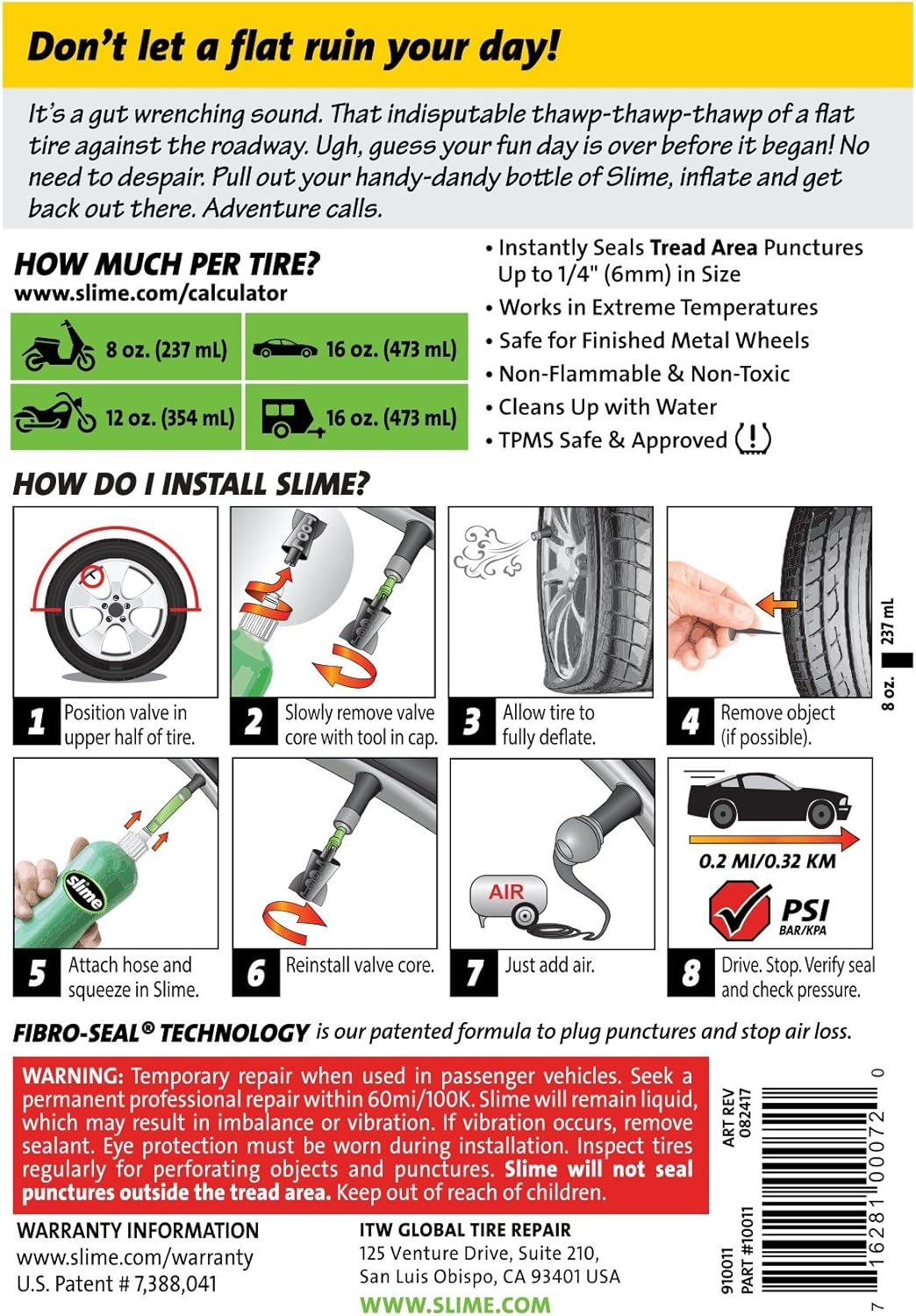
Jerry
is the easiest and most effective way to find a car insurance policy that is customized for you.
After providing you with a comprehensive cross-analysis of the best policies across providers, Jerry will handle the phone calls, paperwork, and renewals for your top pick so that you don’t have to. They even help cancel your old policy! So why do all that extra work when Jerry can do it better?
RECOMMENDED
Judith switched to Progressive
Saved $
725
annually
Alexander switched to Travelers
Saved $
834
annually
Annie switched to Nationwide
Saved $
668
annually
 Most passenger cars are equipped with tubeless tires, which are easy to mount on the rim, reasonable price, lighter weight and easy to repair if a puncture occurs. The driver will be able to seal the tire on his own, without disassembling.
Most passenger cars are equipped with tubeless tires, which are easy to mount on the rim, reasonable price, lighter weight and easy to repair if a puncture occurs. The driver will be able to seal the tire on his own, without disassembling. To learn how to seal a puncture in a tubeless tire, it is worth considering that there are several ways to perform this procedure. Most often, tire repairs are performed using a tourniquet, a fungus patch, and special sprays that tighten the puncture site and stop air leakage.
If you want to learn how to seal a tubeless tire at home with a repair harness, you should follow the instructions:
The machine must be put on the parking brake, and a chock can be used to fix the position of the transport. Next, the car is jacked up and the wheel removed.
You need to carefully inspect the surface of the wheel to find the puncture site. Damage could occur as a result of piercing the wheel with a nail, self-tapping screw or glass shard. In this case, the head of the nail or the edge of the glass will indicate the cut. The foreign object must be removed with pliers. If the puncture site is not visible, you can pour water on the tire, which will cause the air that comes out of the hole to attract attention with a hiss. The puncture site must be cleaned of dirt and marked with chalk or a marker.
In this case, the head of the nail or the edge of the glass will indicate the cut. The foreign object must be removed with pliers. If the puncture site is not visible, you can pour water on the tire, which will cause the air that comes out of the hole to attract attention with a hiss. The puncture site must be cleaned of dirt and marked with chalk or a marker.
Next, you need to take an awl with a screw tip and apply special glue to it. After that, the awl is immersed in the puncture hole and several reciprocating movements are made. The tool should not be removed from the hole.
Then, a repair harness (a strip of raw rubber) is installed in an awl with a needle hole. From two parts there should be identical strips, on which a thin layer of glue is applied. To perform a short-term repair of a large damage, you can apply two rubber strips at once.
The first awl is removed from the puncture, and a tool with a tourniquet is placed in its place.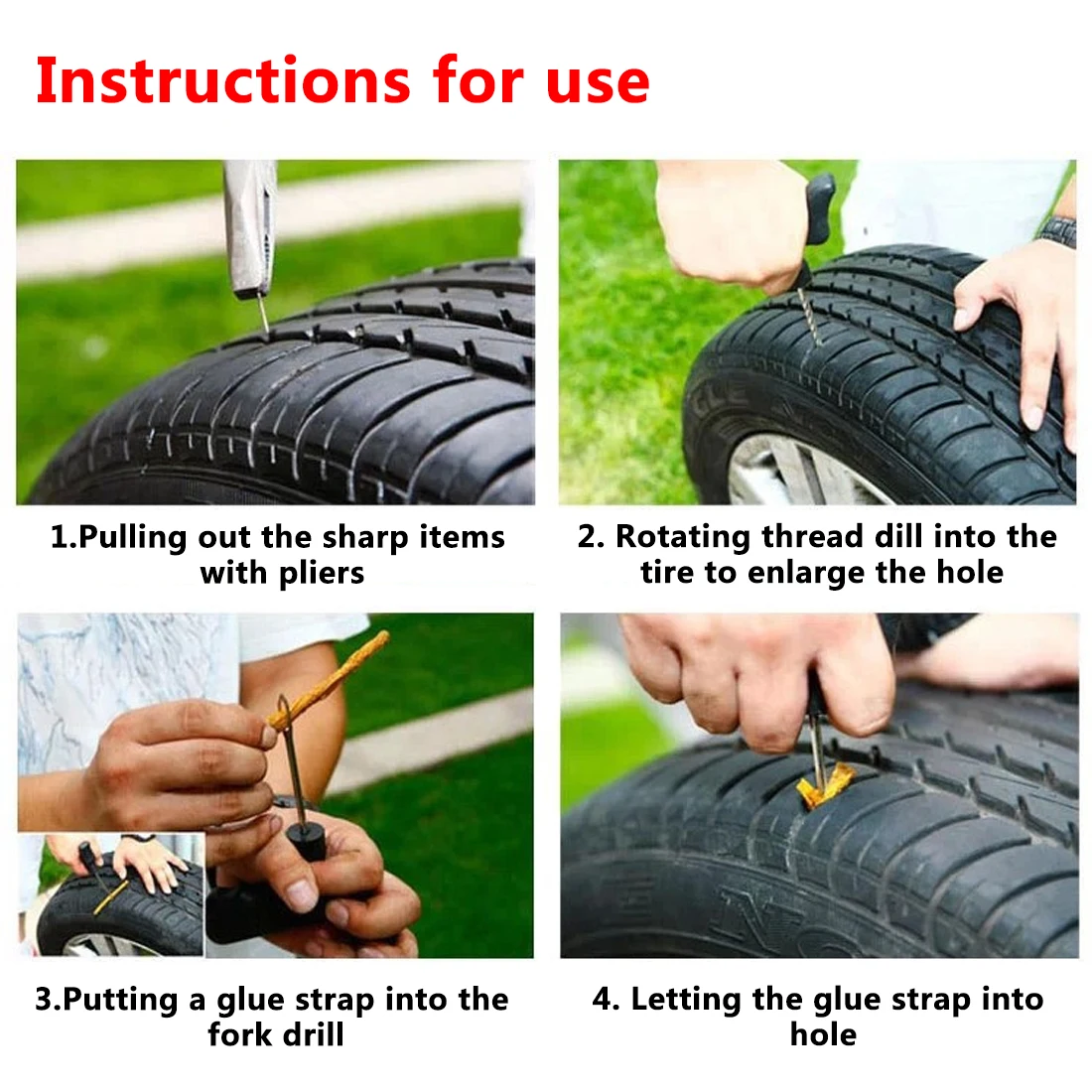 Outside the tire, the edges of the strip remain (1-1.5 cm long). Next, the awl is pulled out of the hole after the tourniquet passes through. A strip of rubber that has folded in half will remain at the puncture site, and its ends should be cut off.
Outside the tire, the edges of the strip remain (1-1.5 cm long). Next, the awl is pulled out of the hole after the tourniquet passes through. A strip of rubber that has folded in half will remain at the puncture site, and its ends should be cut off.
Having learned how to properly seal a tubeless tire with a tourniquet yourself, and after completing this procedure, you need to inflate the tire to the optimum pressure, after which the wheel can be returned to its place. This method is considered relevant if you need to seal a tire tread puncture, and the hole diameter is up to 10 mm. As for side cuts, the elimination of such a problem should be entrusted to professional specialists working in a car repair shop.
If you are looking for an option on how to seal a tubeless tire with a repair kit yourself, you can perform this procedure using a patch fungus. For this method, you will need to remove the wheel and tire from the disk. You also need to purchase patches in the form of fungi, sandpaper and glue. The repair procedure is as follows:
The repair procedure is as follows:
It is necessary to clean the puncture site, rinse it and remove dirt, as well as foreign objects that damaged the tire.
Next, the puncture site is cleaned from the inside to give it a roughness. For this task, you can use sandpaper or a drill with a special nozzle.
At the next stage of work, a fungus of the required diameter and size is selected (patches can be purchased at auto parts stores), based on the size of the puncture.
The patch is covered with glue and placed on the puncture site, after which it must be firmly pressed.
Then the patch must be allowed to dry, after which the wheel can be assembled.
If you are looking for an answer to the question of how to seal Michelin tubeless tires or tires from another brand, you can use the easiest and most effective way. You can use a spare in a can.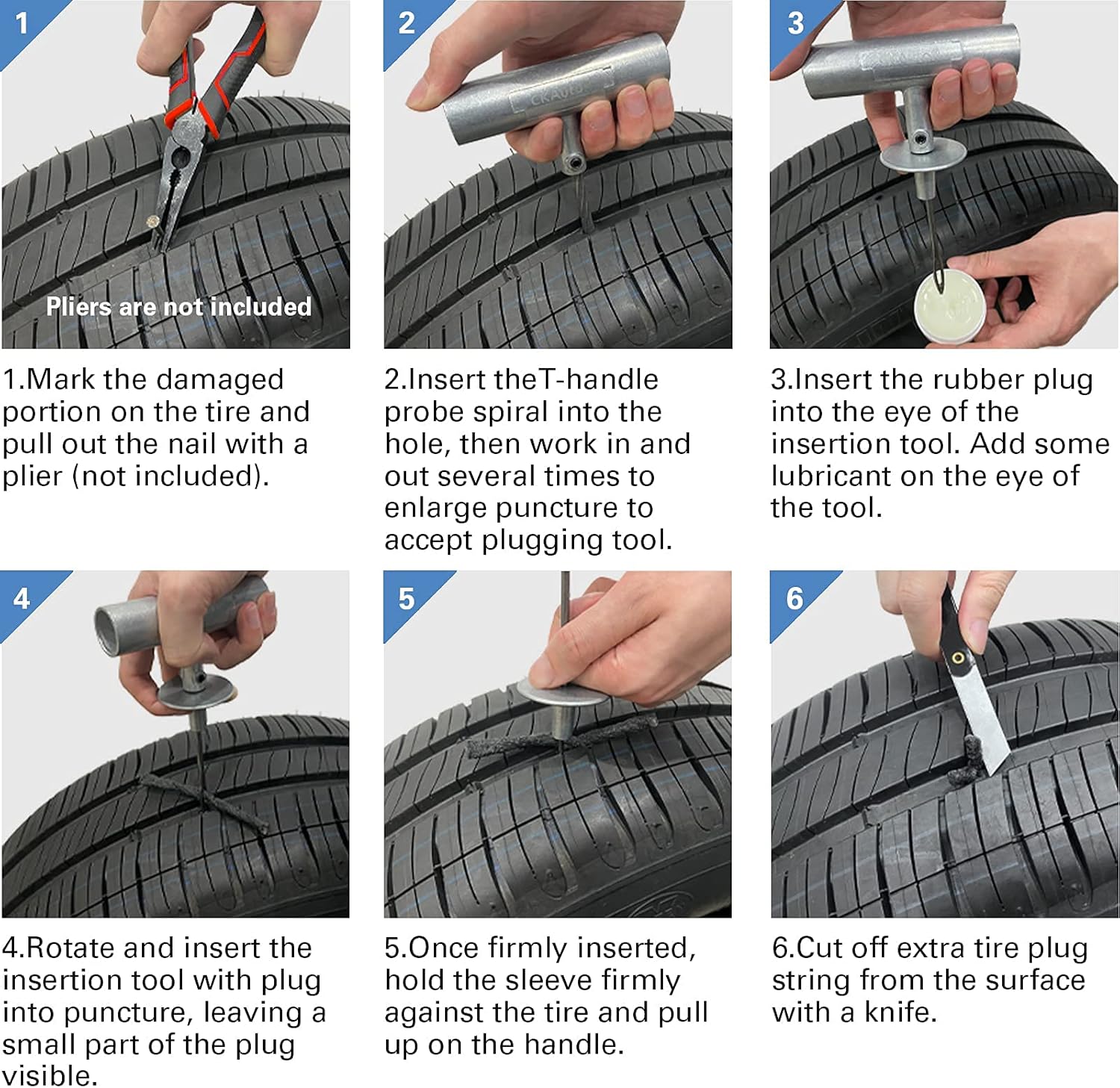 Sealant allows you to quickly seal the wheel. To apply it, you need to unscrew the nipple (this action is not always required). The contents of the vial must be squeezed into the opening of the nipple and returned to its place. Within 10 minutes after inflating the tire, you can continue on your way.
Sealant allows you to quickly seal the wheel. To apply it, you need to unscrew the nipple (this action is not always required). The contents of the vial must be squeezed into the opening of the nipple and returned to its place. Within 10 minutes after inflating the tire, you can continue on your way.
To see how to seal a tubeless tire in a video, you can watch a YouTube video with detailed video instructions: https://www.youtube.com/watch?v=PpnKzfpkeoQ.
Based on the method of repair, certain tools and fixtures will be selected. To repair a tire with a tourniquet, you will need a repair tourniquet, two awls (one of them with an eyelet) and glue. When using a patch fungus, you will need a patch, sandpaper (or a drill), and glue. Among other things, repairs can be carried out with tire sealant. Also, when repairing tires, it is worth using a portable compressor (for inflating tires), a repair kit, a jack, pliers, a wheel wrench, a knife and anti-recoil fixing auto devices.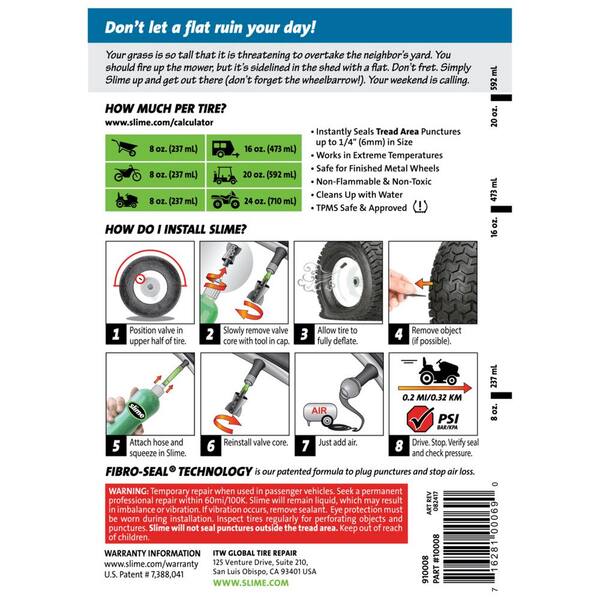
When choosing a repair method, take into account the degree of damage to the tire and follow the instructions so that the work is done as efficiently as possible and the wheel returns to its previous operational state.
Photo: Mikhail Tereshchenko / TASS
adv.rbc.ru
See also
A nail, rebar or a sharp stone - sometimes you can damage a tire almost from scratch. First of all, the scale of damage is important, and often rubber can still be repaired. Most often, motorists turn to tire shops for repairs in the middle of autumn or spring - just in the season of replacing summer tires with winter tires and vice versa. In order not to stand in lines, it is worth knowing exactly when to go to the tire shop and when to go to the store.
The most common "injury" to rubber is a puncture, and it can most often be repaired. Professionals in the nearest service will do it much faster, and your hands will remain clean.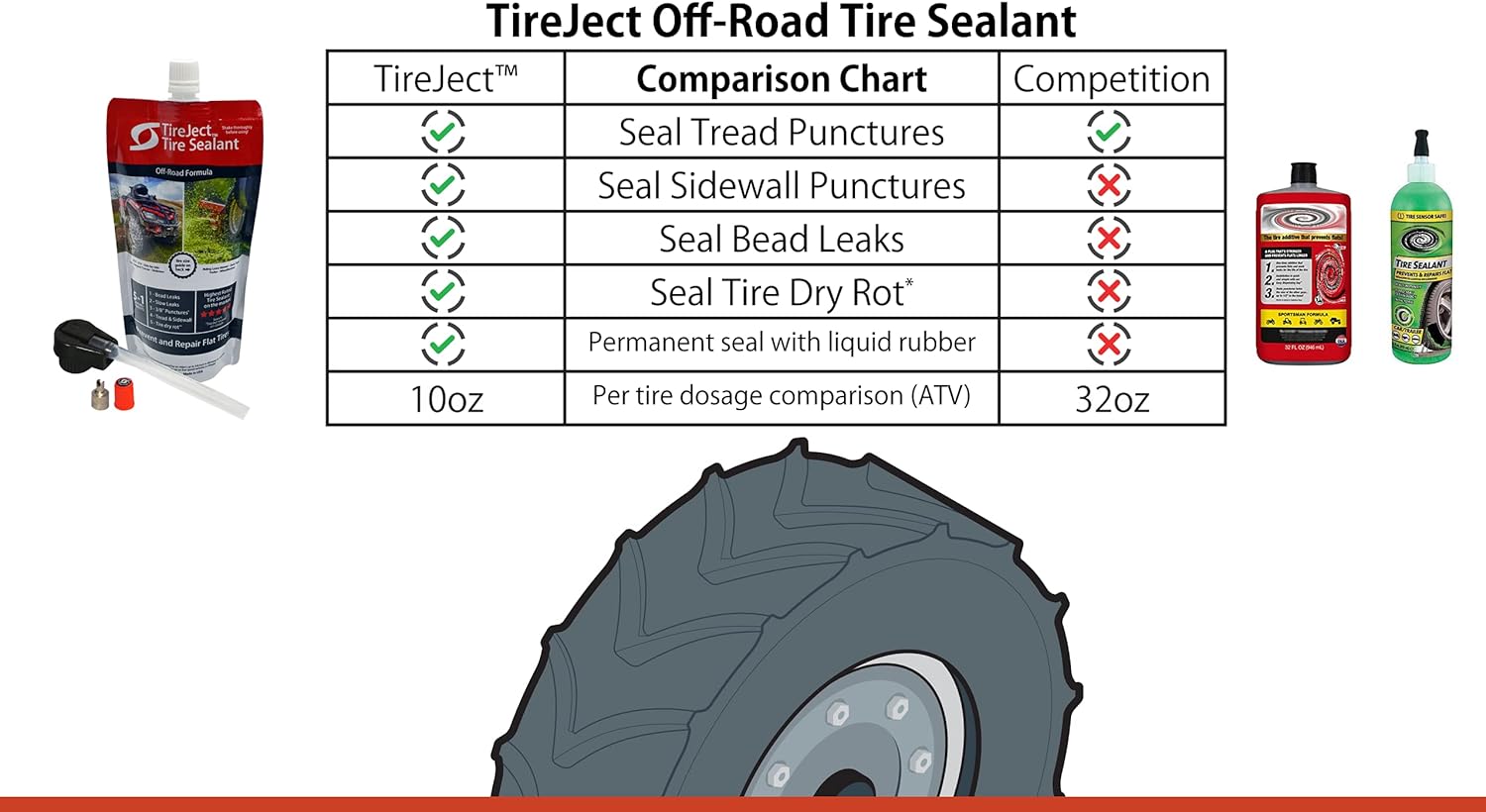 But if the puncture caught you in a deserted place, and there is a pump and a tire repair kit with harnesses in the trunk, you can patch up the tire yourself. Most often, when repairing the front tires, the wheel can not even be removed, it is enough to turn the steering wheel in the right direction and find the puncture site.
But if the puncture caught you in a deserted place, and there is a pump and a tire repair kit with harnesses in the trunk, you can patch up the tire yourself. Most often, when repairing the front tires, the wheel can not even be removed, it is enough to turn the steering wheel in the right direction and find the puncture site.
First, the hole is cleaned with a helical awl, the repair harness is smeared with glue and tucked into the eye of the awl, after which it is inserted into the tire hole. With a sharp movement, the tool is removed, and the tourniquet remains inside and securely clogs the hole. The tails are cut with a knife, but it is recommended to leave about 20 mm. After that, the tire can be inflated and the pressure checked.
Repair with tourniquets is not considered long-term, because after some time they dry out and begin to let air through. A more advanced puncture repair method is vulcanization. The hole is sealed with an elastic patch, and the funnel at the puncture site is filled with a special compound.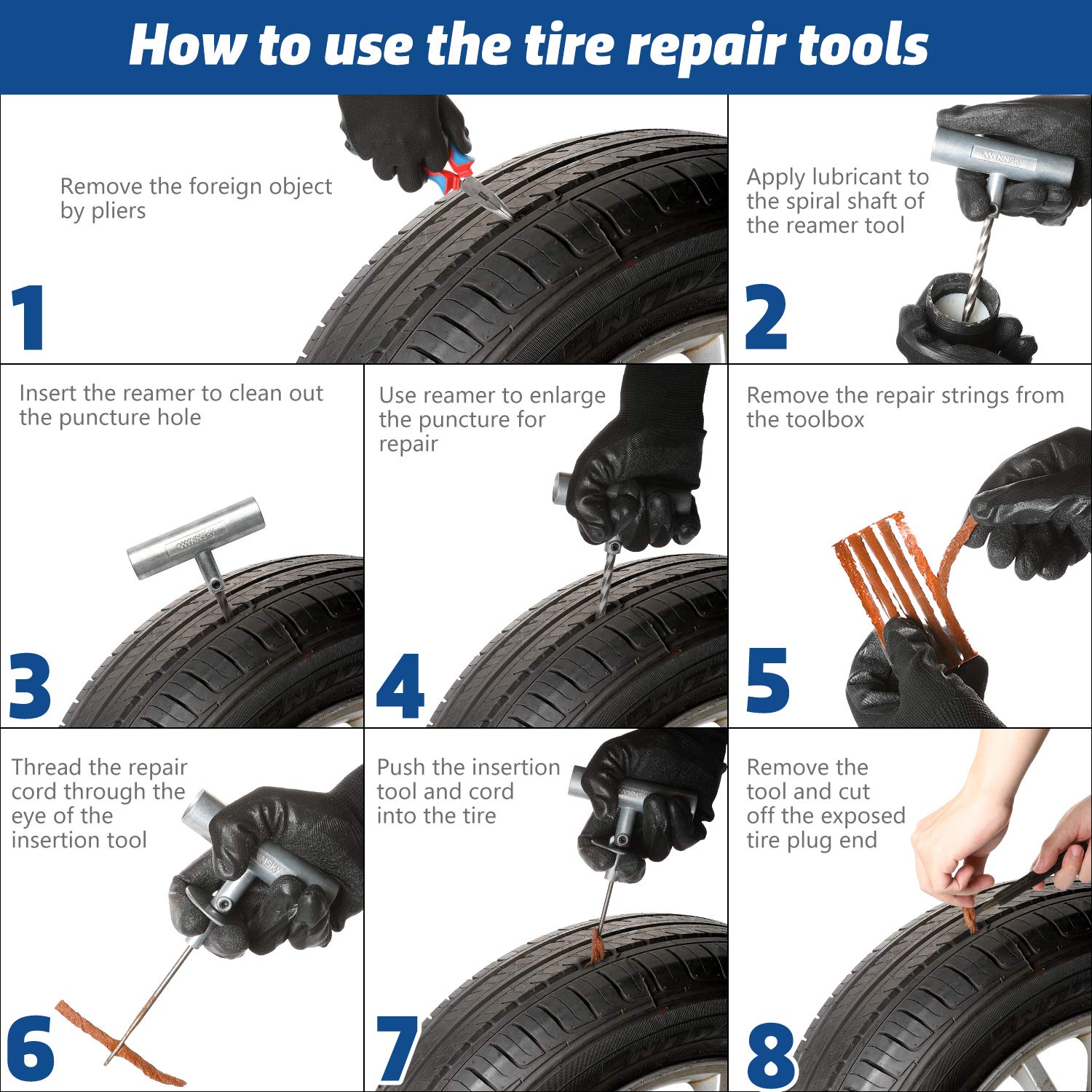 A vulcanizer is put on top, which heats the patch and solders the excess.
A vulcanizer is put on top, which heats the patch and solders the excess.
Under service conditions, the puncture is also repaired with cord fungus. The puncture site is processed and drilled to roughen. Everything is smeared with glue, after which a fungus is introduced from the inside of the tire, its cap is rolled, and the excess legs are cut off from the outside.
Photo: PA Images / TASS
A puncture can also be repaired with sealant. Many car manufacturers with run flat tubeless tires put compressor repair kits in the car instead of a spare tire - a bottle of pressurized sealant. The car is raised on a jack, after which the sealant is pumped into the damaged wheel through the nipple. Next, you need to spin the wheel and pump it up. After repair, the car should be driven a couple of hundred meters to check the tightness of the tire. If it has not recovered, the procedure is repeated.
It happens that a self-tapping screw or a nail closes the hole in the tire, remaining inside. Do not rush to pull it out - until the pressure drops, you can safely get to the service for vulcanization. Sometimes the wheel begins to blow off a few weeks after the self-tapping screw got into it. Therefore, it is better to check tire pressure periodically, and if the pressure sensor lights up, you should at least visually inspect the tire for a nail head.
Do not rush to pull it out - until the pressure drops, you can safely get to the service for vulcanization. Sometimes the wheel begins to blow off a few weeks after the self-tapping screw got into it. Therefore, it is better to check tire pressure periodically, and if the pressure sensor lights up, you should at least visually inspect the tire for a nail head.
A bump or bulge most often appears on the side of a tire after hitting an obstacle or hitting a hole at speed. From the impact, the sidewall carcass threads are damaged, the tire ceases to hold the load and pressure, swelling appears. Any small bump eventually turns into a larger one, and with such a defect, the wheel can burst at any time. This is a direct safety hazard because a sudden flat tire can cause loss of control and a road accident.
Some bulges can be repaired, but no patch will ever restore a tire to factory stiffness. The ideal option in this case is to replace the tire. If a hernia has appeared on the tread, then you can extend the life of the tire with the help of cord patches - ready-to-use patches with an adhesive layer.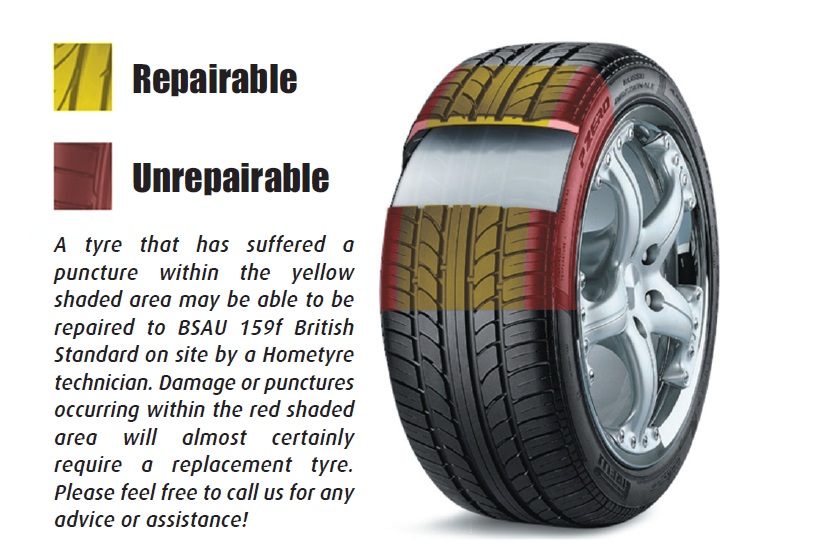 But if swelling is found on the sidewall, the likelihood of repair is minimal, the wheel is easier to change. Blisters on low profile tires are generally not repairable.
But if swelling is found on the sidewall, the likelihood of repair is minimal, the wheel is easier to change. Blisters on low profile tires are generally not repairable.
Only car service professionals can repair a side cut. Cord patches will be needed to repair the damage, but after some time the wheel will still have to be changed. This method will work only if the gap is not in the shoulder area of the tire, then no one will repair it.
In general, cuts or punctures, unlike punctures, are considered non-repairable, since the integrity of the frame is violated. And breakdowns do occur on the go, when the tire abruptly loses pressure and has time to make only a few turns “on the rims” before it comes to a complete stop. In this situation, the cord breaks and the layers of the tire are destroyed. Even if it is possible to close the hole, it is not recommended to use such a weakened tire.
Photo: Mikhail Pletsky / Russian Look
Cracks, sidewall abrasions and unprofessional tire fitting can also lead to tire problems. Cracks can occur as a result of improper storage of tires. Their danger is that moisture begins to flow to the cord, and this already renders the frame unusable. Air can also escape through cracks. Cracks cannot be repaired and tires will not last long. A tire with cracks is deformed, blistered, and may even break while driving.
Cracks can occur as a result of improper storage of tires. Their danger is that moisture begins to flow to the cord, and this already renders the frame unusable. Air can also escape through cracks. Cracks cannot be repaired and tires will not last long. A tire with cracks is deformed, blistered, and may even break while driving.
Rubbing against curbs or driving on uneven roadsides can damage the tire sidewall. When driving like this, it is worth inspecting the tires for damage regularly. If a slight wear is found, the wheels can be swapped, which will slightly extend their service life and allow you to delay the purchase of new ones.
Improper fitting can damage the tire bead. In this case, the tire will lose its geometry and sit on a disc with a bevel, “eights” will be visible during rotation, and the driver will feel vibration while driving. It is impossible to repair this defect, the wheel must be changed as soon as possible, otherwise there is a risk of damage to the suspension.